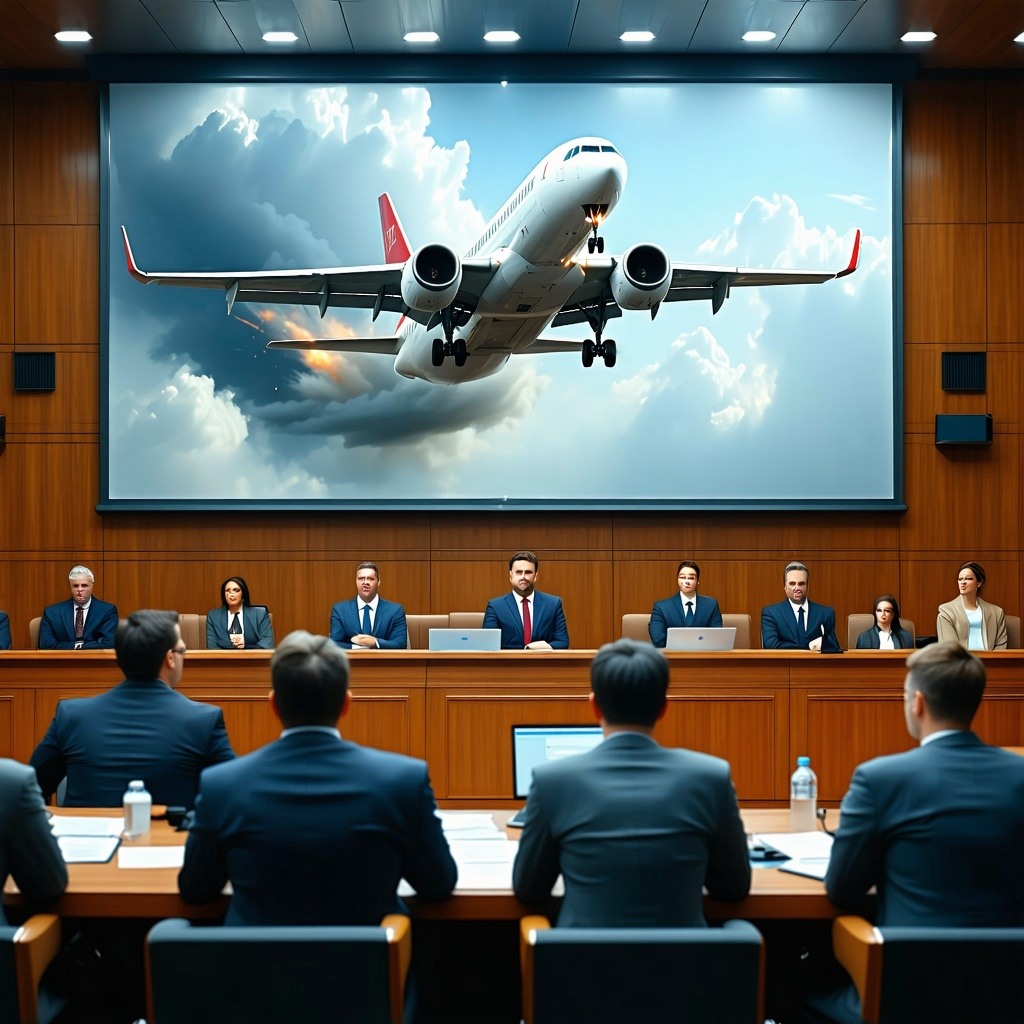Litigation graphics can be especially useful in aviation cases. Nearly every juror has been an airline passenger at some point, and jurors know that while most flights are uneventful, mistakes committed by airline employees or others can result in serious injury or death. A good trial exhibit will illustrate exactly what happened on the flight and will properly evoke people’s concerns about flying, without being improperly inflammatory.
For example, in two high-profile airline trials in the 1990s, using only the technology that was available at that time, we produced highly persuasive trial animations and other litigation graphics.
In a wrongful-death trial arising out of the tragic crash of ValuJet Flight 592 into the Everglades in 1996, we produced a 3D animation that synched audio from the cabin, the pilots and air traffic controllers with the audio transcript and animation of the plane’s flight.
The well-documented cause of the crash was improperly stored oxygen containers, placed in a cargo compartment by a contractor, that contributed to a fire bursting through the floor of the passenger cabin during flight.
We were able to maximize the plaintiff’s damages by demonstrating the terror of the three and one half minutes it took the plane to fall from the sky. The litigation graphics animation is shown here without audio, as the audio is protected by court order.
These litigation graphics were not intended to depict exactly what happened on the flight as the fire burned through the floor of the passenger cabin, but rather were designed to allow the viewer to use his or her own imagination by hearing what happened through the eyes of the crew and the passengers and by observing the movements of the plane during the last moments of the flight.
The animation helped secure a very favorable settlement for the client and resulted in the trial lawyers on the case describing the animation as “an extremely important piece of evidence” that was “well, well worth it.”
In a different type of air accident case, we were instrumental in helping to secure the largest verdict stemming from airplane turbulence in history. This case arose from a 1995 American Airlines flight from Los Angeles to New York during which severe turbulence caused the plane to rise and fall 200 feet within less than one second, throwing passengers from their seats.
In order to effectively depict the traumatic experience that the passengers endured during the 28 seconds of intense turbulence, we created a 2D animated litigation graphic of an airplane drawn to scale that moved from left to right, leaving behind its path in the form of a graph, which showed the plane’s altitude as the 28 seconds progressed.
In the left hand corner, we superimposed an image of the Statue of Liberty and its measurements, so that jurors could compare them with the altitude changes the plane made and understand that what the passengers experienced was essentially like jumping off the Statue of Liberty. The use of the image of the Statue of Liberty was included in this litigation animation since the case took place in New York.
A jury awarded $2.2 million to 13 plaintiffs in this case -- even though no one was seriously injured. The award was based almost entirely on allegations that the passengers suffered post-traumatic stress syndrome stemming from the 28-second ordeal during which they believed they were going to die.







Leave a Comment